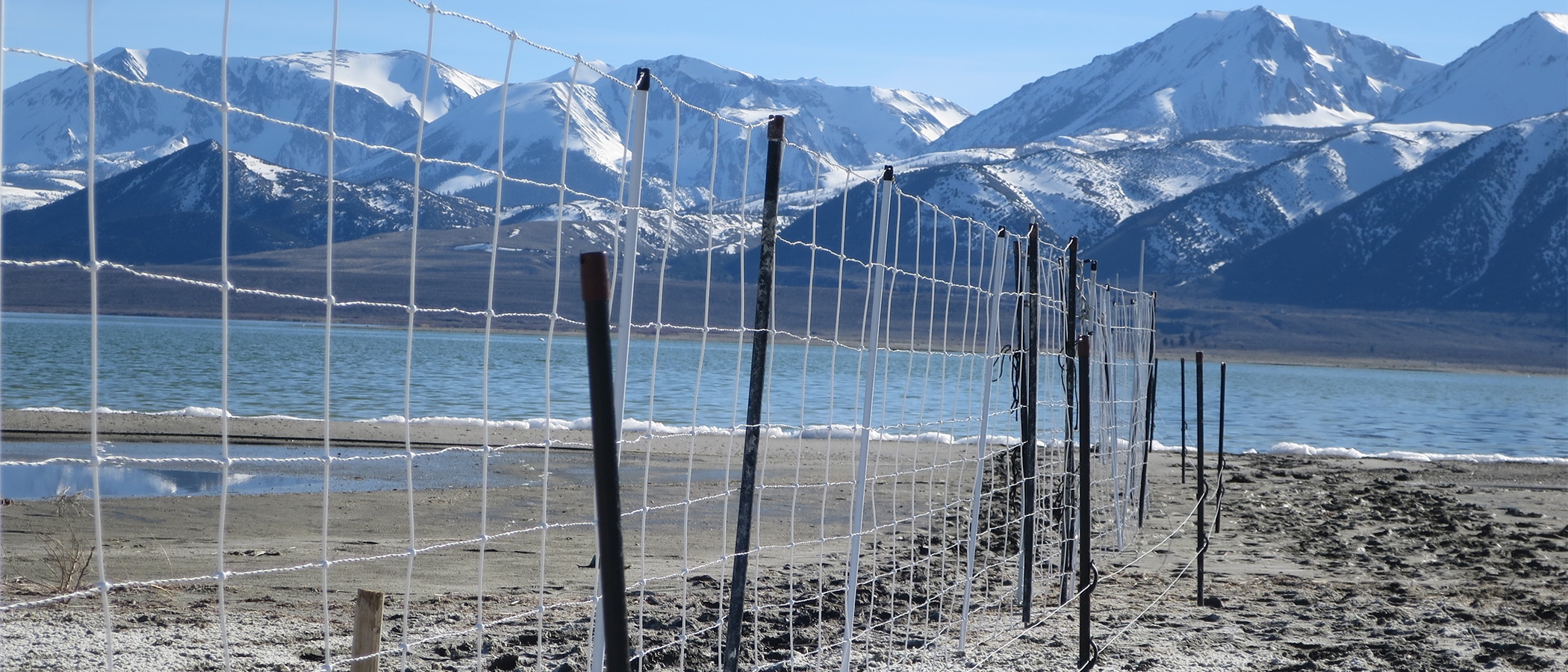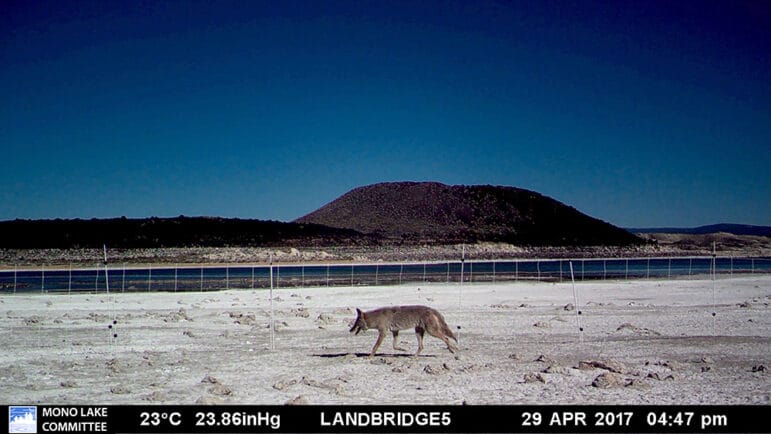
California Gulls at Mono Lake can’t catch a break. Another drought year and a legacy of excessive water diversions are increasing the threat of coyotes crossing the emerging landbridge to Twain Islet and reaching vulnerable eggs and chicks during the nesting season. Lake level projections for next year indicate Mono Lake will be at a dangerously low level, and that the landbridge will be exposed. Anticipating this, Mono Lake Committee staff are once again planning to install the temporary electric fence that successfully protected the gulls just four years ago.
A proven strategy
In early 2017 the Committee, in partnership with California State Parks and the Inyo National Forest, installed a one-mile-long, solar-powered electric fence (see 2017 Winter & Spring Mono Lake Newsletter). The crowd-funded fence was the type normally used for livestock—a light mesh construction designed for easy setup and removal. While fence installation across a mile of barren, silty, and alkaline lakebed was anything but easy, the fence was highly effective. The Committee also set up a network of wildlife cameras and recorded coyotes walking the fence line but failing to find a way through it. The electrification discouraged coyotes from digging under the fence, and they did not swim around the ends that terminated in Mono Lake.

Tracking lake level and risk
Lake level projections indicate that by April 1, 2022, Mono Lake will be very close to 6380 feet above sea level, the elevation at which the landbridge to Twain Islet is exposed enough to allow coyotes to cross to the gulls’ nesting grounds. The last documented coyote incursion on the islands was in 2016 very close to Twain Islet. If the coyotes had reached Twain while birds were incubating eggs or feeding chicks, it might have ended the nesting season for the majority of gulls at Mono Lake because more than 50% of California Gulls nest on this critical patch of habitat. Gulls will scatter and abandon nests and chicks with the arrival of a coyote.
When food and reproductive strategies are at stake, animals like coyotes and gulls remember: coyotes become more willing to swim through shallow alkaline water with the expectation of a food reward, and gulls remember the nesting disruption and are unlikely to return. Managing the coyote risk is the work that must be accomplished proactively to protect the gulls when Mono Lake is this low.
Insurance policy for gulls
With another dry winter Mono Lake will be perilously close to the elevation at which coyotes have crossed to the islands in the past. A wet winter would brighten the lake level outlook, but the lake wouldn’t rise until the runoff season is underway, well after nesting begins in April. In 2017, fence construction began in January after staging supplies and equipment on the landbridge. While that winter turned out to be extremely wet, the lake didn’t start to rise significantly until June, and the fence successfully protected the gulls throughout the nesting season. The fence was removed that August after the gulls fledged.
The planning process has started, and the Committee anticipates reconstructing the fence over the winter. Conversations about permitting and logistics are underway with California State Parks and the Inyo National Forest. The environmental planning with State Parks accomplished in 2016 will be updated and staging tools and materials on the landbridge, which requires detailed coordination and cooperation from the agencies, will follow. Committee staff will be busily organizing for the project, pulling the fence and the solar panels from storage, and preparing them again for an unhoped-for deployment on the remote and wind-scoured landbridge.
This post was also published as an article in the Fall 2021 Mono Lake Newsletter. Top photo by Geoff McQuilkin.
